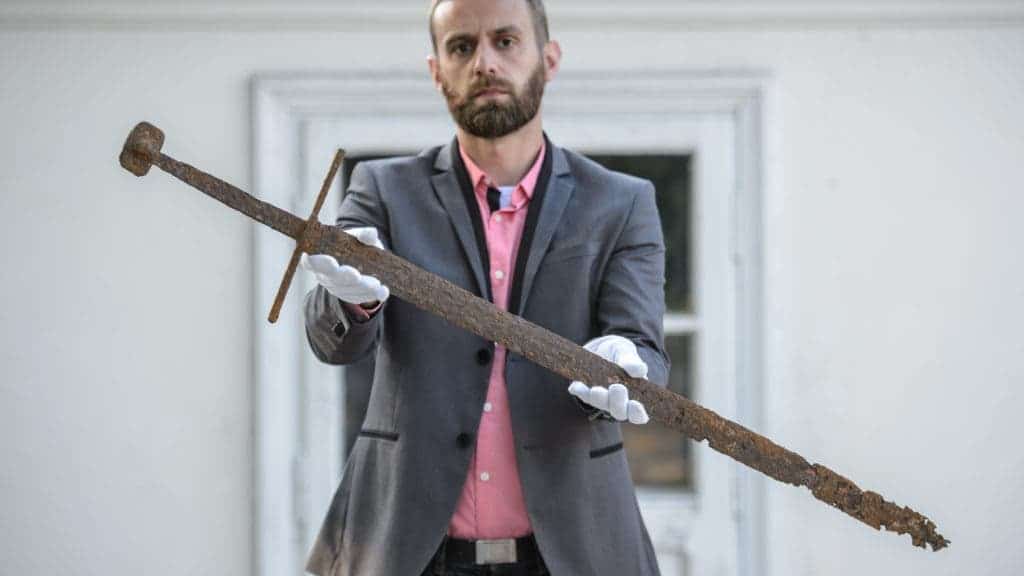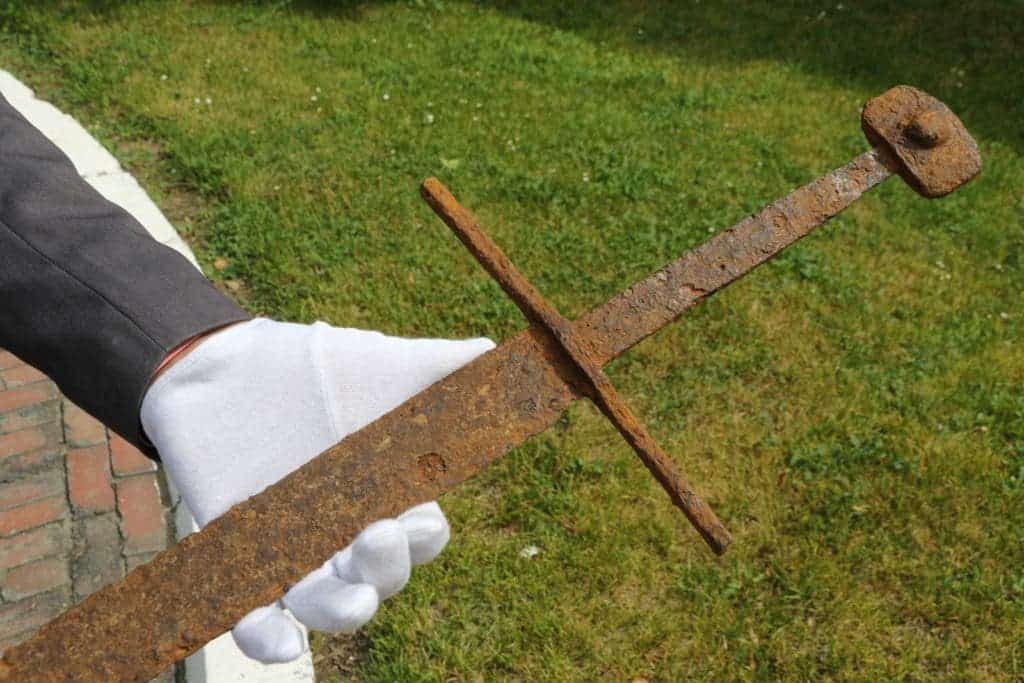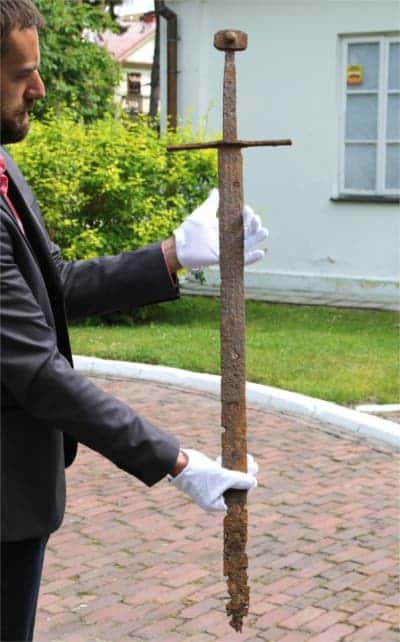A very fortunate excavator operator working in Mircze, Poland, made headlines after he found a medieval longsword. The weapon is thought to have been buried in a peat bog for over 600 years which explains why it looks so badly corroded. Even so, this is an extremely rare find.

Bartłomiej Bartecki, director of the Fr. Stanislaw Staszic Museum in Hrubieszów presents the sword found in the Commune of Mircze. Photo: PAP/ Wojciech Pacewicz.
Considering it’s been buried in peat for so long, the sword’s condition isn’t that bad. “Only the original hilt, which was likely made from bone, wood, or antler, is completely gone,” George Dvorsky writes for Gizmodo.
The medieval long sword was later donated to the Fr. Stanislaw Staszic Museum where it was thoroughly analyzed by the staff.
This is a well-balanced weapon that’s nearly 1.2 meters (4 ft.) long but weighs only 1.5 kg (3.3 lbs.). The knight who owned it had to use both hands to grip the sword but given its specs, this was a very agile weapon. You wouldn’t want to meet someone armed with such a weapon in battle.
It still bears the mark of an isosceles cross in a heraldic shield on the rear bar which must have been the blacksmith’s trademark sign. Other signs might still be etched on the sword, though, concealed under the thick layers of rust. Perhaps the name of the owner is etched somewhere.
Meanwhile, archaeologists from the museum plan on investigating the site where the long sword was found to get more clues. Did it belong to a knight who simply lost it? Was the owner killed and his remains are somewhere close to where the long sword was found? Such questions will hopefully be answered soon.
“This is a unique find in the region,” said Bartłomiej Bartecki, director of the Fr. Stanislaw Staszic Museum in Hrubieszów. “It’s worth pointing out that while there are similar artifacts in museum collections, their place of discovery is often unknown, and that is very important information for historians and archaeologists.”
Bartecki used this chance to emphasize how important accidental but nevertheless valuable archaeological finds such as this exquisite longsword are. In April, his museum opened an exhibition of 500 items, all of which were handed to the museum by accidental finders.
For now, the medieval longsword is undergoing conservation in Warsaw but will later be returned to become part of the main exhibition at the Museum in Hrubieszów.











